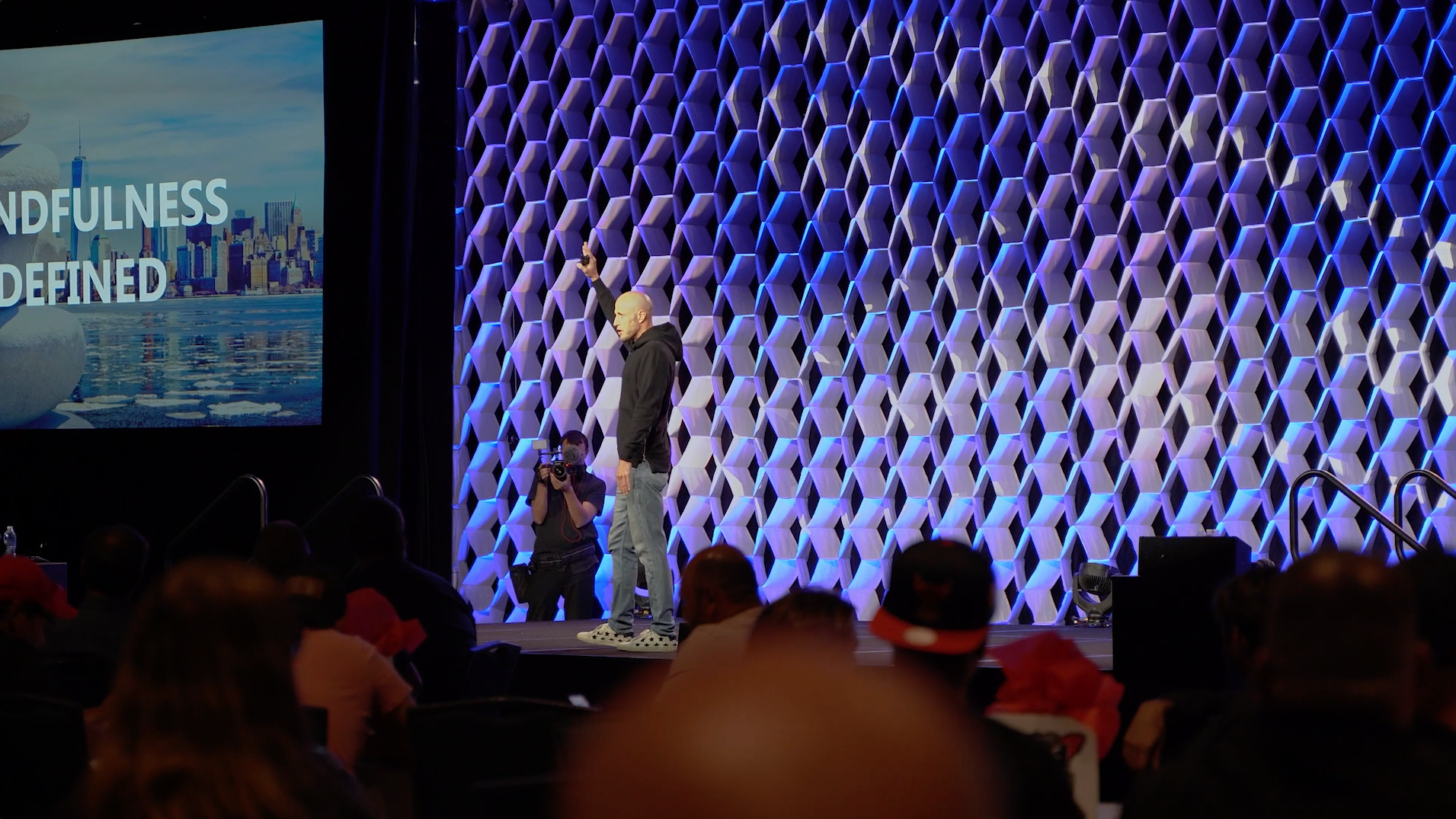Unlocking The Power of Mindful Leadership
Nearly a decade ago, I found myself entangled in an unhealthy relationship while simultaneously juggling a business and launching a nonprofit for at-risk youth in some of Milwaukee’s toughest neighborhoods. The stress was palpable, and I was actively seeking solutions. It was during this tumultuous period that I stumbled upon the concept of mindful leadership through Jonathan Fields’ podcast, The Good Life. An advertisement for the Headspace app, promising stress reduction through mindfulness meditation, caught my attention. I embarked on a 10-day trial. At first, I was a “Crisis meditator” meaning I’d only practice in response to stress. But eventually, after a few months, I developed a consistent practice and I knew that mindfulness would profoundly impact my life and leadership journey.
Today, on World Mindfulness Day, I’m excited to share with you the profound connection I’ve discovered between mindfulness and leadership. Back then, I had no clue that “mindful leadership” was even a thing. In this comprehensive guide, I’ll unveil the essence of mindful leadership, its undeniable benefits, and actionable steps you can take to integrate it into your leadership style.
Defining Mindfulness
Before we delve into the specifics, let’s clarify what we mean by “mindfulness.” Amidst its surge in popularity, the true essence of mindfulness can get lost. To put it concisely, mindfulness is “The ability to cultivate non-judgmental awareness of our thoughts, feelings, and actions in the present moment.”
Mindful Leadership Elevates Influence Through Example
One of the cornerstones of mindful leadership is modeling. When we embrace mindfulness, we become acutely aware of the behaviors, skills, and energy we exhibit as leaders.
The connection between how we present ourselves and what we instill in our team is direct. Trust, engagement, and connection with our team members erode when there’s a misalignment between our conduct and our expectations for them.
Modeling Integrity Builds Trust
One of my mentors started coaching the Marshfield High School boys’ basketball team for summer leagues and tournaments. He would run some practices for them and always offered to train them outside of practice, “Whenever you want. As long as I don’t have something going on with my family, I’ll be there.”
On a hot, muggy, midwestern summer night in July at 1 am, Dave’s phone rang. It was one of the high school players from the Marshfield team.
“Coach, can we get a workout in?” one of the kids asked, as Dave heard a couple of the others trying not to laugh in the background.
“Yep, I’ll be there in fifteen minutes. You better be there.”
He hung up. Fifteen minutes later, he was working out two players just like it was 1:15 pm, not the middle of the night. Brad Fischer was there, now the University of Wisconsin-Oshkosh Women’s Head Coach, and remembers how much that night influenced his coaching career. “The music was turned up; players were sweating, and Dave coaching us up. He was trying to motivate us to be the best possible version of ourselves. He kept saying, ‘No one else is working out right now.”‘
We have to model who we want our people to become. That’s exactly what Dave did that night.
Mindful Leadership Manages Their Emotional State
Mindful leadership significantly enhances our ability to manage ourselves, particularly our emotional states. In today’s competitive job market, retaining top talent is vital. A leader’s self-awareness and emotional control play a pivotal role in this equation.
Have you ever made a hasty decision under pressure due to emotional turmoil? Many of us have. This can negatively impact team morale and relationships. I remember that when coaching one of my first basketball teams, I was incredibly hard on them after losing a game, and it took time and energy to rebuild the relationship and their morale. Afterward, I realized it was not at all what they needed at the moment.
Amateur leaders are driven by emotion. Mindful leaders are driven by intention.
Mindful Leadership Accesses The Power Of The Decision Gap
Leaders make decisions continuously, shaping the future of their teams and organizations. This is where the concept of the Decision Gap comes into play. The Decision Gap is the mental space between an event and our response.
Mindful leaders understand the importance of this space. They use it wisely, filling it with thoughtful consideration rather than impulsive reactions. By creating distance between stimuli and responses, they gain clarity and objectivity.
In times of adversity, mindfulness allows leaders to:
- Recognize stressors or triggers.
- Detach emotionally.
- Gain an objective perspective.
Instead of becoming engulfed by the storm, they become its observers. This vantage point empowers them to make decisions aligned with their vision and values, instilling trust in their teams.
Mindful leadership offers stability and purpose in a world characterized by chaos and change. By embodying the principles of modeling, self-management, and harnessing the Decision Gap, you can not only enhance your leadership skills but also cultivate a thriving work environment. The future of leadership is mindful.




